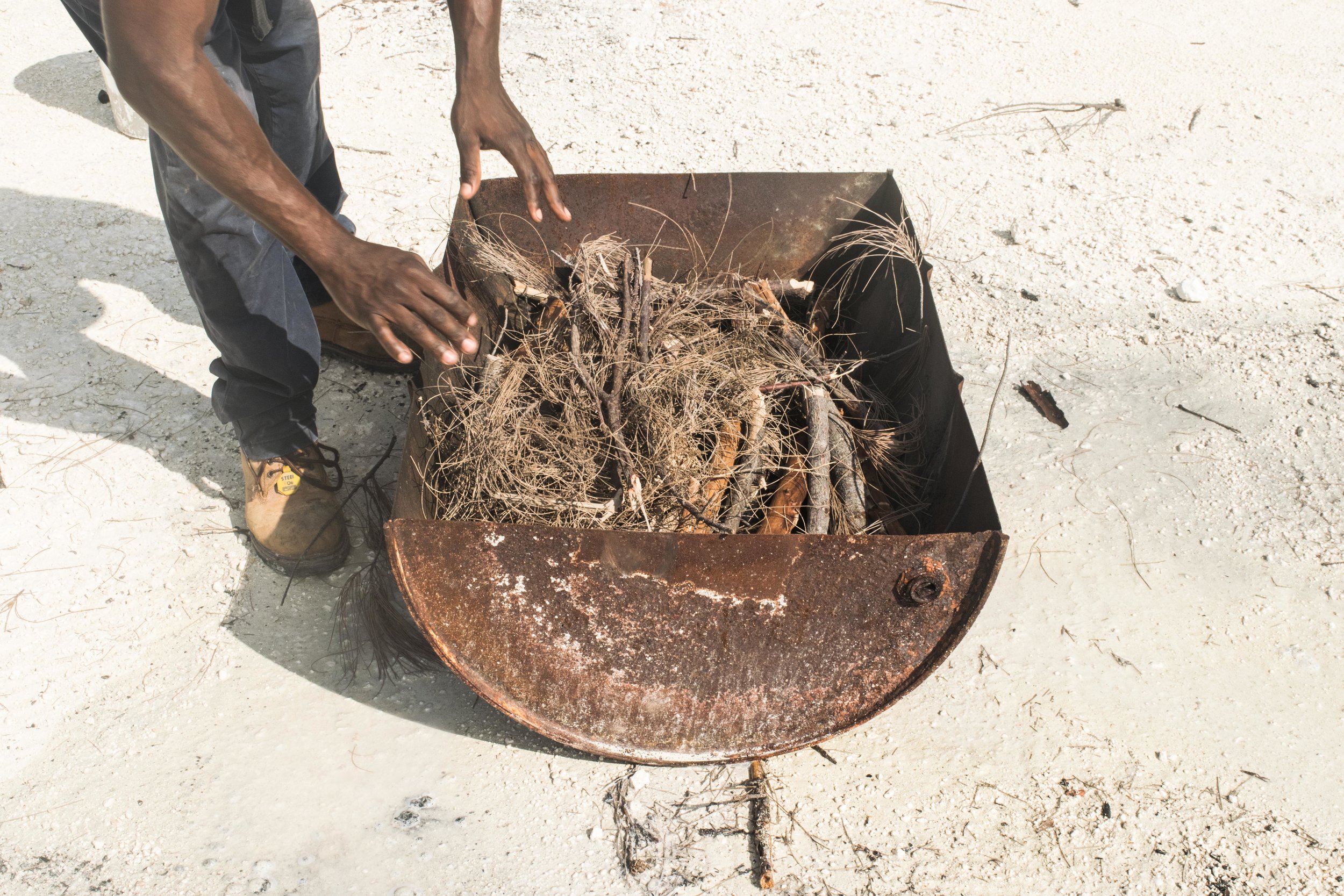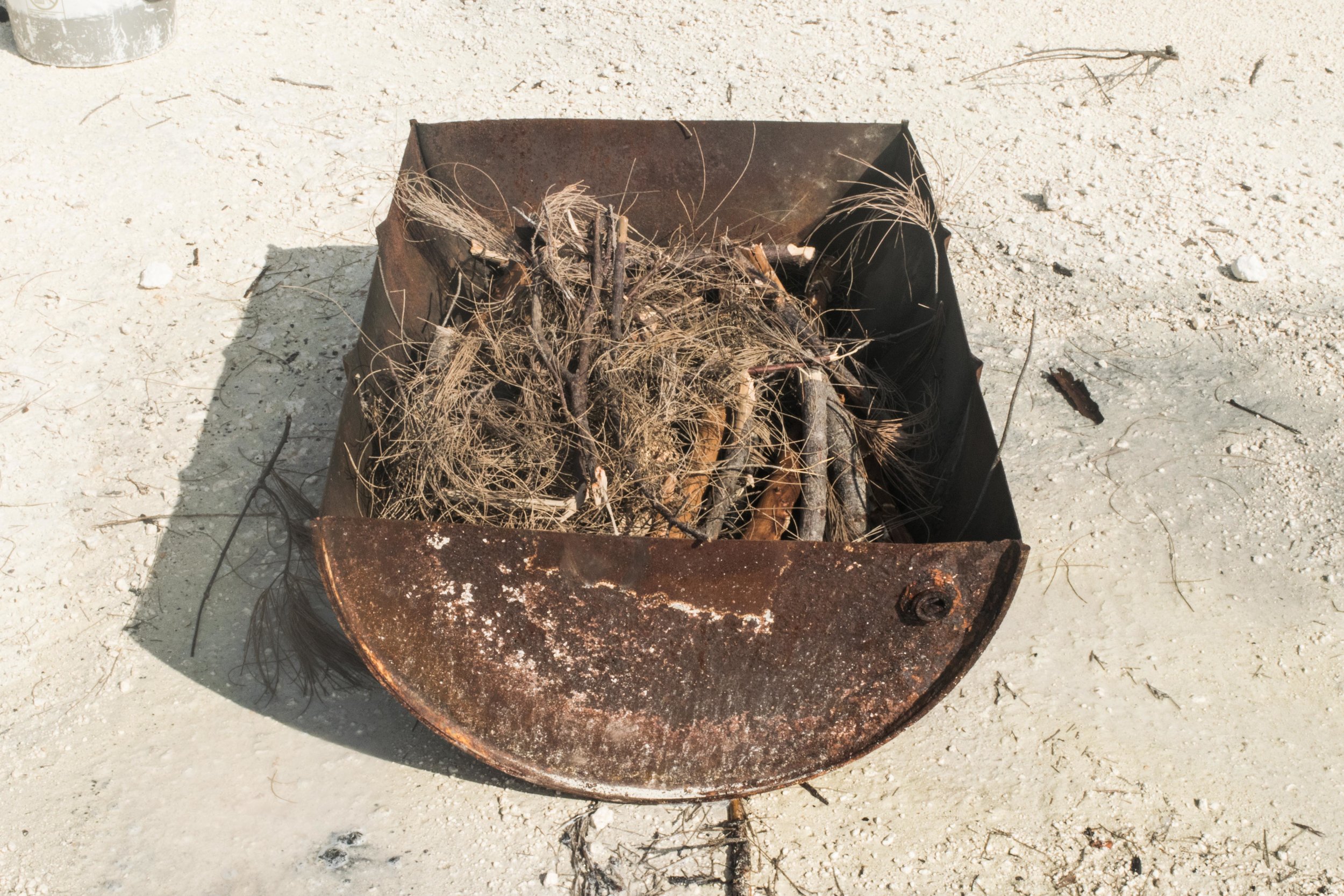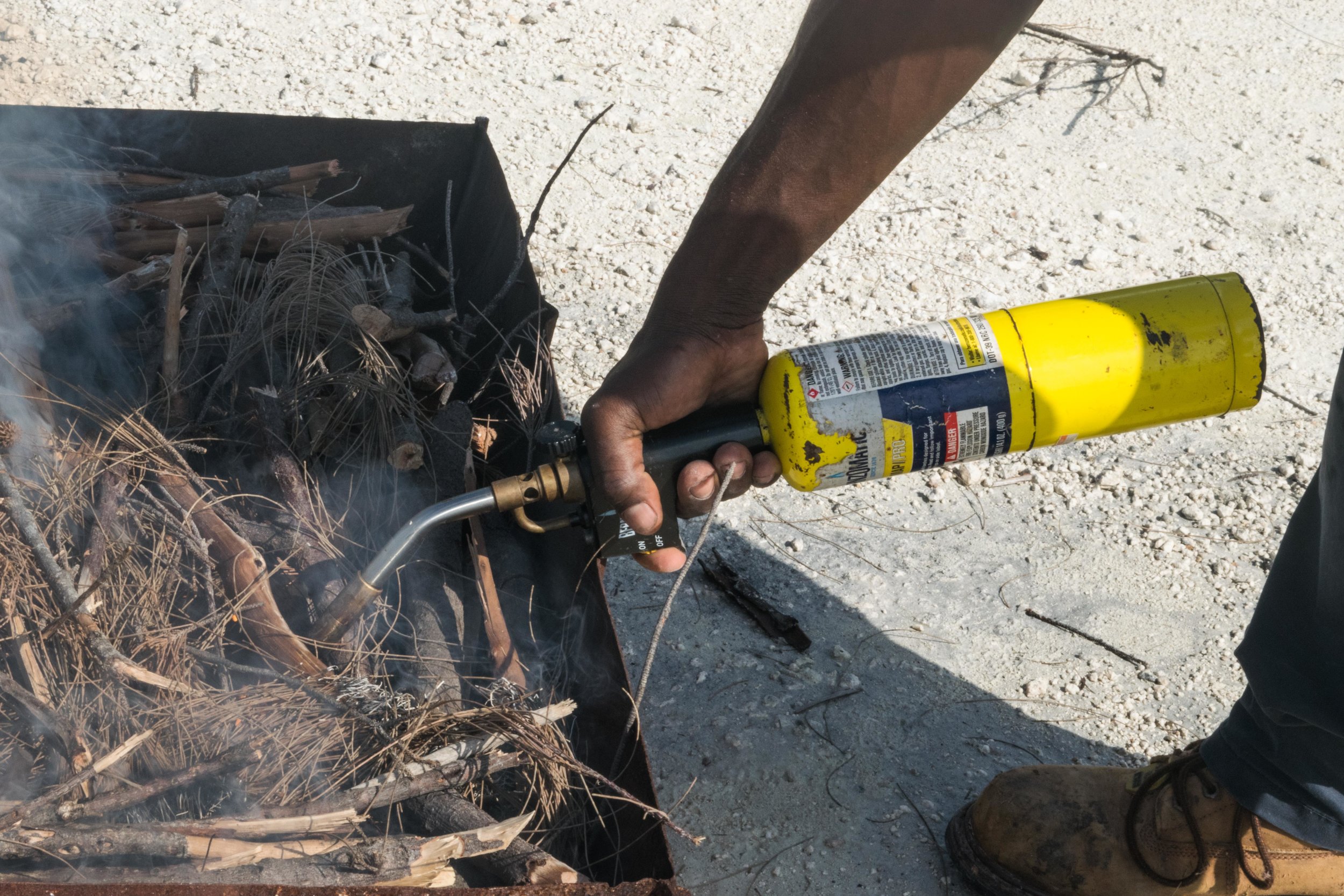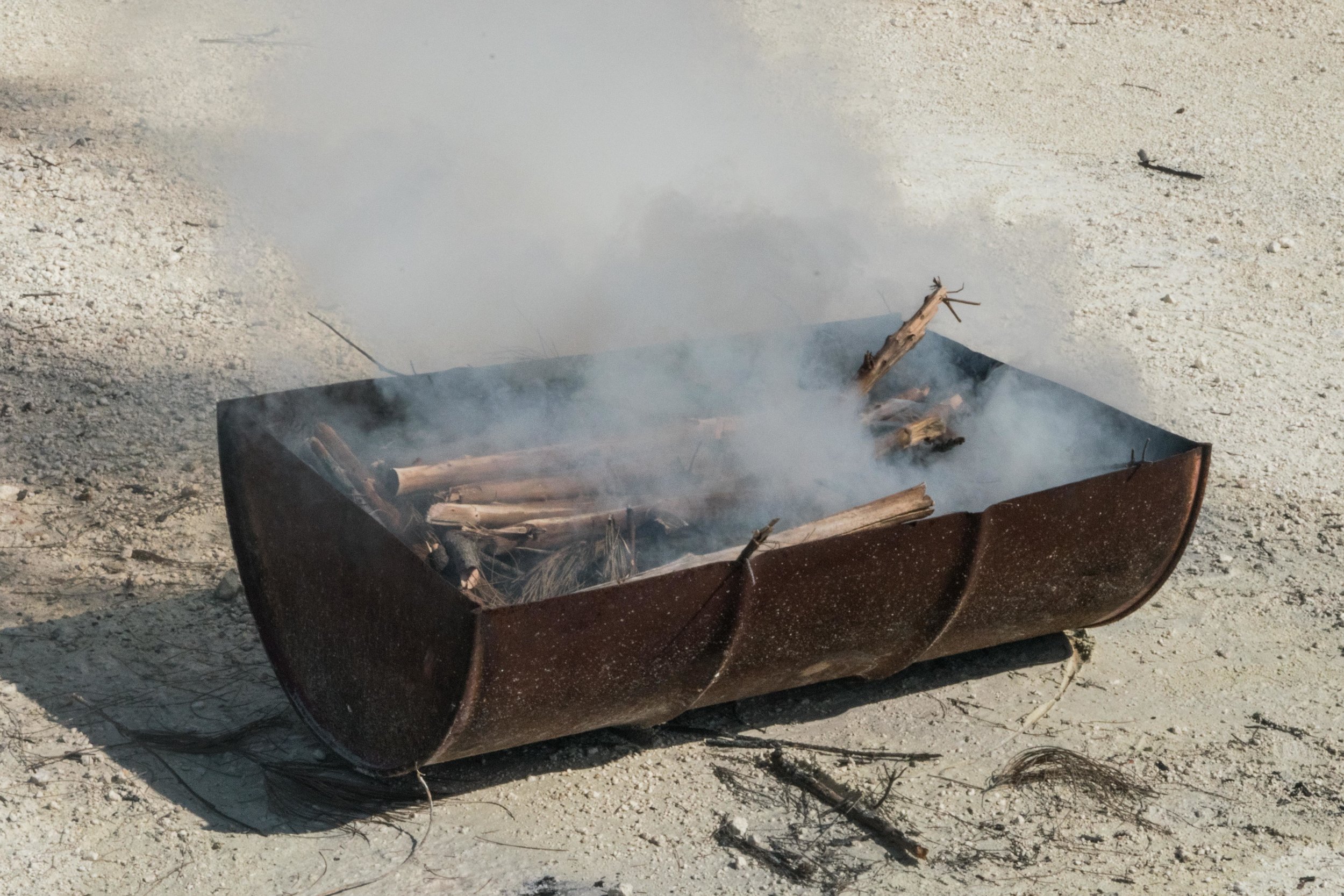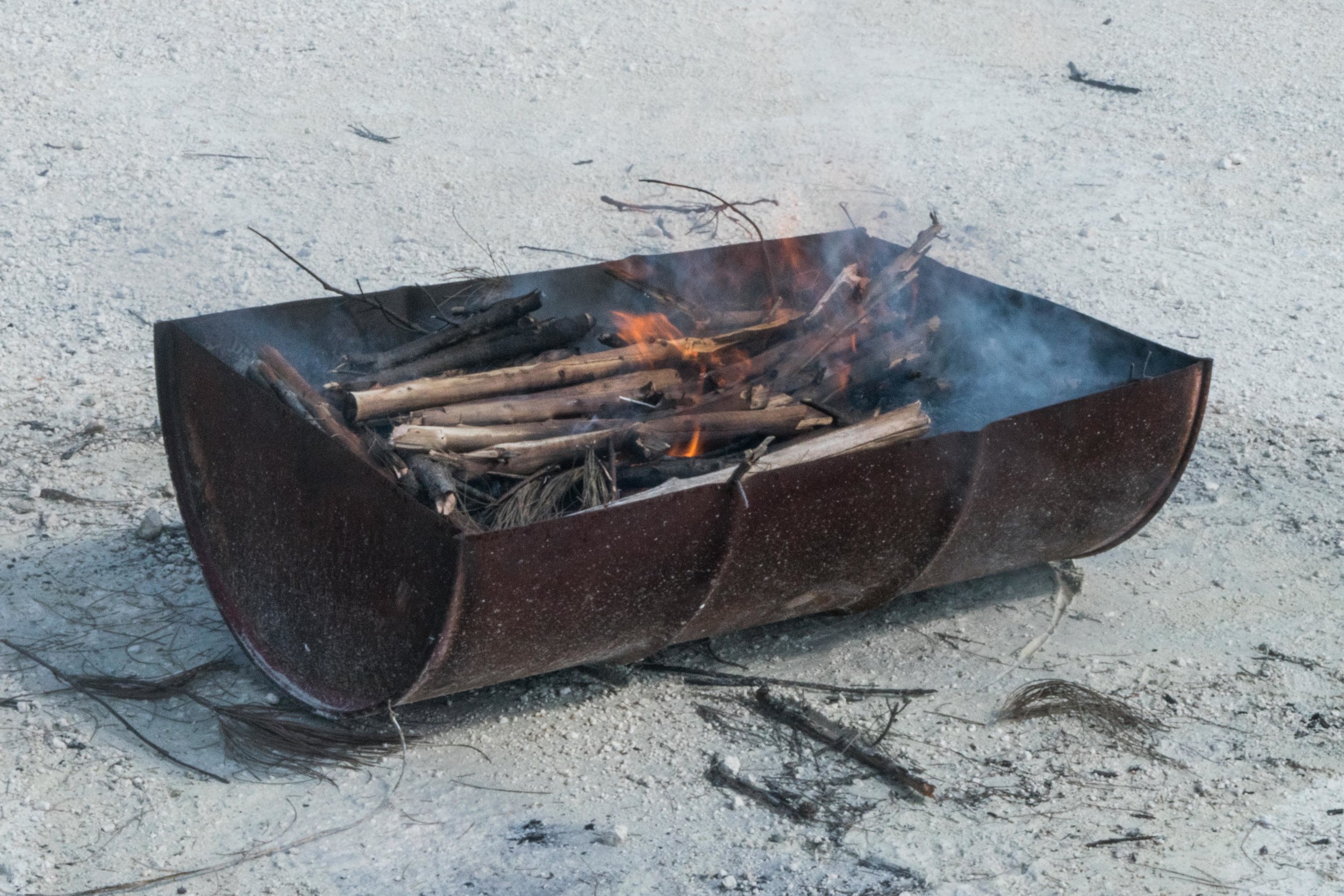At the Center for Sustainable Development we use organic biochar to help our soil produce the best vegetation possible. Biochar is a stable carbon-rich product of pyrolysis (the thermal decomposition of organic matter in a high heat, low oxygen environment). Many organic substances can be used to make biochar including dried coconut husks, wood scraps and bones from food waste. Here on Eleuthera we use the bark of casuarina trees, as it is an invasive tree to The Bahamas and there is a heavy supply of it.
Biochar has been proposed as a solution to mitigate climate change, with its greatest potential being for sustainable agriculture. The benefits of biochar include:
-
Decrease the amount of water that plants need and in the amount of stress brought on by drought by increasing the capacity of the soil to store water and water-soluble nutrients. The stable carbon matrix holds onto water and air.
-
Improvement of biodiversity of the surrounding soil by providing refuge to beneficial microorganisms that can lead to improving nutrient and moisture uptake by plant roots.
-
The process of making biochar is carbon negative as it permanently removes the greenhouse gas, carbon dioxide, from the atmosphere.
-
Biochar is extremely porous increasing the available air in the soil.
-
Organic chemicals are stored with the carbon matrix during pyrolysis. These organic chemicals stimulate the plant’s internal immune system increasing resistance to pathogens.
Make sure you have the following when making your own biochar:
-
Personal protective equipment including, safety glasses, long pants, closed toed shoes, fire extinguisher
-
Water bucket and hose
-
Welding gloves or heat resistant gloves
-
The biochar kiln (repurposed 48 Gallon water pressure cylinder cut in half)
-
Char fuel (e.g. wood)
Procedures:
-
Fill a bucket of water and keep it 5-10 meters nearby the fire incase burns occur
-
Turn the water hose on and soak the foliage and ground around and beneath the kiln thoroughly to prevent surrounding organic matter from catching fire.
-
Fully load the kiln with dry kindling. Start the fire at the top and watch it burn its way down. Once a large enough fire has started inside the kiln, one needs to keep loading wood.
-
The loading rate can be determined by the amounts of smoke and ash forming. Too much smoke means too much wood is being loaded too quickly. Too much ash forming means to little wood is being loaded too slowly.
-
Load wood and charring when ash can be seen. Keep doing this until the kiln is almost full.
-
Once the kiln is almost full and the process is complete, drench the charred material with water and cover with soil. Let this sit overnight and unload in the morning.
-
The pyrolysis process is complete after sitting overnight.


